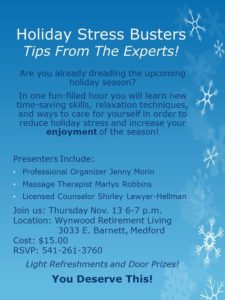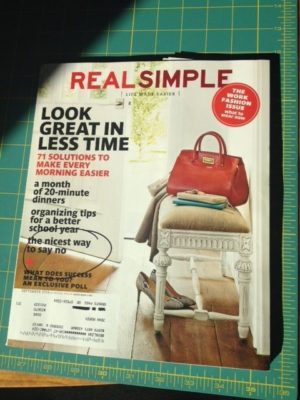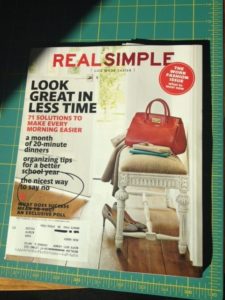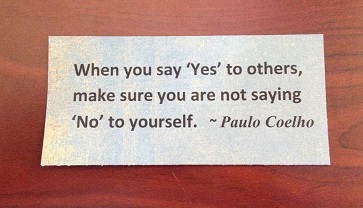You turn on your home computer to send an email that needs to go out this morning to your PTA or Rotary group. But before you click “write” you notice a Pinterest notification; a friend re-pinned one of your pins. Curious, you click on it. That leads you down the rabbit hole and you are lost in the attractive and addictive world of Pinterest. Before you know it, you’ve wasted 30 minutes and still haven’t sent out the essential email! You have to leave for work in half an hour, so you probably will miss breakfast . . . again.
This is the anatomy of a typical distraction.
Funny thing . . . as I went to the internet to find a dynamite quote about distractions, guess which site came up? PINTEREST! I admit it, I did get on Pinterest, but I only allowed myself 10 minutes to search.
One way to boost our will power and focus is to manage our distractions instead of letting them manage us.
I like to call distractions ‘bright and shiny things,’ which take you away from your goal.
Distractions are a part of life, something to either get over or give in to. Stay focused, or give in to the bright and shiny things.
To help withstand distractions, know your goal. Use it to stay focused.
5 ways to keep Distractions at bay
- Identify what a real emergency is. Sometimes at work, you will get a red-flagged email that says it’s an emergency; it needs your attention NOW. Is that really true? If it’s from your manager or boss, yes it does. But how about other requests? Know your company’s policy.
- Have a plan. When you are tempted to just check that one text that came through, but you are supposed to be drafting the agenda for this afternoon’s meeting, have a plan. This could include turning off your personal notifications during work hours, silencing your cellphone during focus time, or just training yourself to wait until you finish your current task.
- If you are frequently interrupted during the day, and you are blocking off time to complete focused work, leave some room in your schedule. If it’s going to happen, make it part of your plan so you
don’t get frustrated. I call this leaving ‘white space’ in your calendar.
- Change your physical environment. Studies show that those in cubicles are interrupted 9 percent more than those with an enclosed office (Real Simple, Dec. 2014). If it’s possible to rearrange your work environment, (for example, facing away from the cubicle opening) take advantage of that. Many people cannot. It’s also quite helpful to use sound-canceling headphones to block distracting noise.
- Kick the urgency addiction. How often do you check your phone for texts? How often do you check your email? Is the newest thing on your plate the most attractive for you to work on? Can you go a whole day without getting on Facebook, Pinterest or Twitter? Try it. You might learn something about yourself.
Distractions are a part of life, something to either get over or give in to. It is a choice. The choice is yours to make!
Resources:
Stay healthy at your desk with 3 cubicle tweaks: http://ow.ly/E5e82
www.pinterest.com/explore/distraction-quotes/http://www.brainyquote.com/quotes/keywords/distractions.html#BozKhmVjdLjKzZ0i.99
Real Simple magazine, Dec. 2014.


 have any fears, tendencies or habits to overcome? How can you overcome them? Record your ideas.
have any fears, tendencies or habits to overcome? How can you overcome them? Record your ideas.



 I just have to crow about being ahead of the curve with my 8 ways to Say No blog in August.
I just have to crow about being ahead of the curve with my 8 ways to Say No blog in August. A legitimate fear: it is much easier in the short term to say ‘Yes’ and have the asker be happy and grateful to you. Nobody likes being told no. See Tip #2 below!
A legitimate fear: it is much easier in the short term to say ‘Yes’ and have the asker be happy and grateful to you. Nobody likes being told no. See Tip #2 below!





 Decisions, Decisions
Decisions, Decisions



